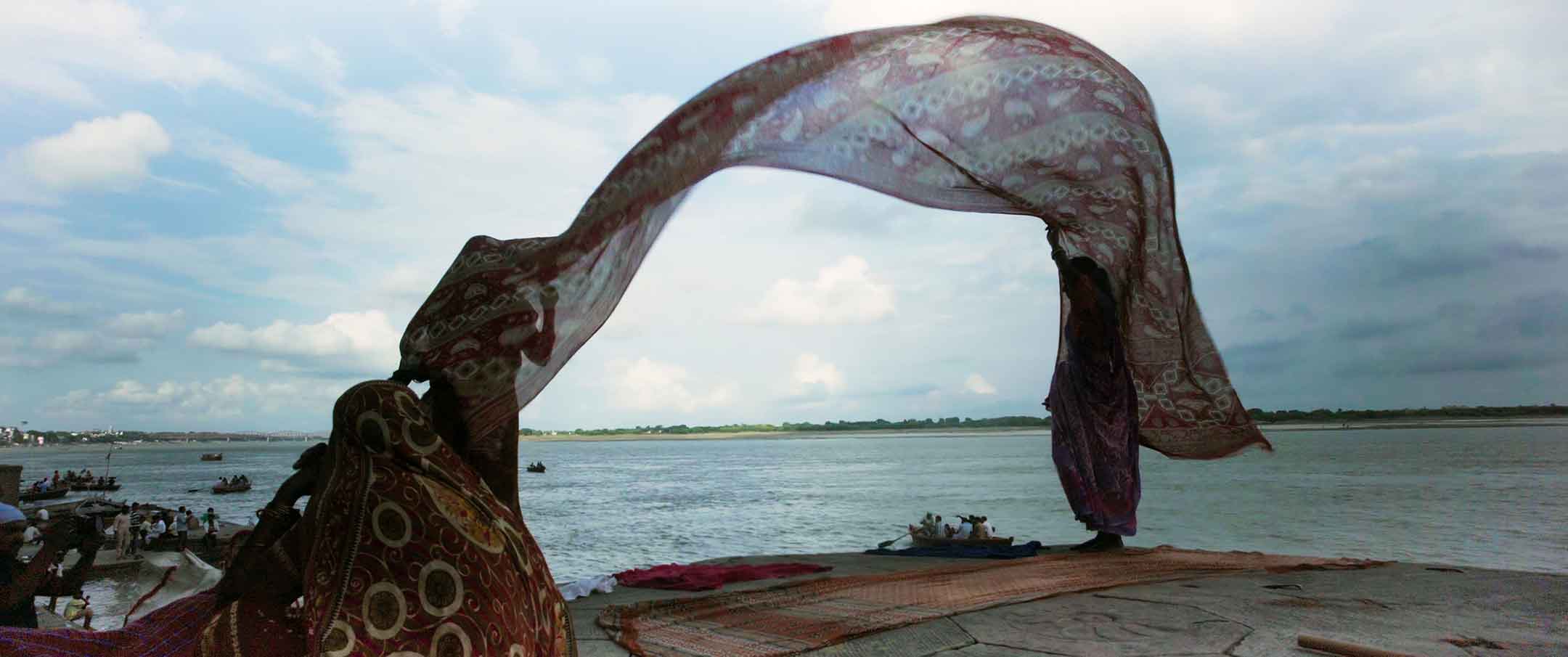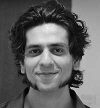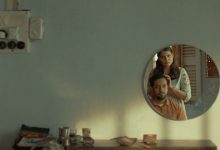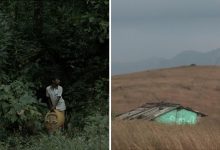How can point, line, shape, curve and texture be applied to the form of film? This question drives veteran Piyush Shah’s debut documentary The Third Infinity. Shot over 15 days in January 2017, Shah’s approach is to capture the grid in such a way that the flattened out space collides with depth and verticality, and horizontality form a mandala that free up time.
The essence of the film is cinematographic consciousness and its representation as an index in the film. The images, at the beginning of the film, show a flattened out space at the right half, and a deep space in the left half of the frame. Shah keeps reframing so that he is able to cut directly into space and produce a temporal collage of a new kind. The argument of this piece is that, with a certain approach to film form, it is possible to create a new image even in a post post-modern world. The horizontal plane represents the horizon which is the representation of bliss (ananda) and the vertical is an indexical for stages of consciousness that the film form can transform the viewer’s perception into.
The symbolic is represented by the triangular formation with which the film opens and into which the water thuds into, which represents a feminine energy. This grid like meeting of flattened shape and depth finds its own rotation along an axis. The manifest reality of this rotation, in other words, is in the swapna awastha, whilst the spectator is in the awake or jagrut awastha. The frame, the totality of matter in the image captures a straight line whilst it documents movement in a curve: is this a cinema of the tangent, in which the straight line meets the volume of a curve?
Shah’s use of color is reminiscent of Bauhausian color schemes, with yellow as the sruti or tonic color complemented by the red and the blue as is the Bauhaus dictum influenced by the writings of M.H.J Schoenmaekers. Having spoken about the matter in the image and the image itself, we now turn to sound. Sounds are used as indexes for fragments of rhythms:the sound of the helicopter, an index for the closing shot of Mani Kaul’s Before My Eyes, finds its counterpoint in the rotation-translation-line of flight assemblage that the sound of the cycle is a referent for. Similarly the kitschy sounds from advertising jingles and Bollywood songs refer to the outside of the purified space of Beneras that realizes itself through the suggestive form of the soundtrack. On the visual plane, the shot of the pigeon flying is precisely an index for the Deleuzean line of flight by which the spectator is free of meaning.

Which doesn’t mean the film is free of meaning or only celebrates experience. The indexicals implied in the above paragraph culminate in the shot of the red arrow pointing upwards that is an index in a visual form. The jor section where Raga The Third Dimension develops finds its symbolization in a vistaar of Raga Todi on rudra veena culminating in the shots of fragmented sounds and varied rhythms, in which a 4(16) beat cycle is broken into a 7 beat cycle which then becomes a 6 beat cycle. This is precisely where Shah returns to electronic sounds in the third quarter of the film to imply transcendence to a next level of consciousness. This transcendence is at the same time a new beginning i.e. in this new level of consciousness. Cinema however is an immanent form, which as Deleuze points out is virtual-real and not actual, and for Shah this immanent form is its representation as space. The lines of flight discussed above are precisely this proof of immanence whilst the indexes refer to transcendental possibilities of the image,
The solidified image finds its counterpoint in the liquefied images of Benaras ghat and the gaseous images of smoke. The solid and liquid combine in the paddle boat in which the equipment i.e. the paddle produces movement, only to be replaced by the diesel boat in which the sign is replaced by the signal, that moves the boat forward. This signal is a representation of post-modernity in all its form that dissolves the sign and all forms of objectivity. The Third Infinity tries to argue that the real of the dream is all the camera can capture as the spectator is in her/his waking state. For Shah, this ‘real’ of the dream is precisely equipment: the paddle which one links to Shah’s work as cinematographer i.e. equipment and moving into combination or appropriating equipment as the only way of capturing ‘the reality of the fiction’ that the ‘documentary’ cannot help but become.
[divider top=”yes” style=”default” divider_color=”#999999″ link_color=”#999999″ size=”2″ margin=”0″]The Third Infinity was nominated for IDSFFK 2018.
[youtube_advanced url=”https://www.youtube.com/watch?v=rIs1UYagTs4″ width=”150″ height=”100″ responsive=”yes” controls=”yes” autohide=”alt” autoplay=”yes” mute=”no” loop=”no” rel=”yes” fs=”yes” modestbranding=”no” theme=”dark” playsinline=”no”]






@Dude – Piyush shared this link and i’m so glad to have read all the way to the bottom and seen your byline – it has been an age! Looks like you’re doing good work, Cheers, Farhad